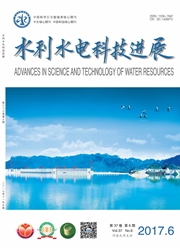

 中文摘要:
中文摘要:
针对地下水流过程及其与地表水转化关系研究中,冻土分布特征及融冻过程对地下水系统的影响机制相关研究较少的问题,通过分析国内外冻土区地下水对河道径流的贡献、地下水流动路径和地下水-热耦合模型的相关文献,对地下水流过程及其与地表水转化研究进行综述,认为:①受土壤中冻土空间异质性的影响,不同冻土区地下水对径流的贡献比例不一致;②利用水化学和同位素示踪剂研究地下水流动路径,有助于冻土区地下水流动系统概念模型的构建,但只能获得定性或半定量的结果;③地下多相流系统的水-热耦合模型可将冻土的变化与其相应的水文响应过程耦合在一起,实现了地下水流过程及其与地表水转化关系的定量刻画,但在实用性方面仍需进一步完善,是未来的主要研究方向。
 英文摘要:
英文摘要:
Based on a few studies concerning permafrost distribution and mechanisms of the freezing-thawing cycle of active layers influencing groundwater system in terms of groundwater flow and its interaction with surface water in permafrost region, this paper reviews the knowledge of groundwater flow and its interaction with surface water by analyzing studies of the contribution of groundwater flow to channel runoff, groundwater flow paths, and coupled flow and heat transport models. The results indicate that the contribution of groundwater flow to channel runoff varies greatly in different permafrost regions due to the spatial heterogeneity of permafrost. Although identification of groundwater flow paths based on chemical and isotopic tracers will help establish conceptual model of groundwater flow system in permafrost region, however, the analysis results are qualitative or semi-quantitative. Moreover, coupled flow and heat transport models of multi-phase groundwater, which link the vibration of permafrost and the hydrological response process, have already made it possible to quantify groundwater flow processes and groundwater’ s interaction with surface water. Future research should devote more attention to improving the practicability of the models in actual catchments.
 同期刊论文项目
同期刊论文项目
 同项目期刊论文
同项目期刊论文
 Glacier and glacial lake changes and their relationship in the context of climate change, Central Ti
Glacier and glacial lake changes and their relationship in the context of climate change, Central Ti 期刊信息
期刊信息
